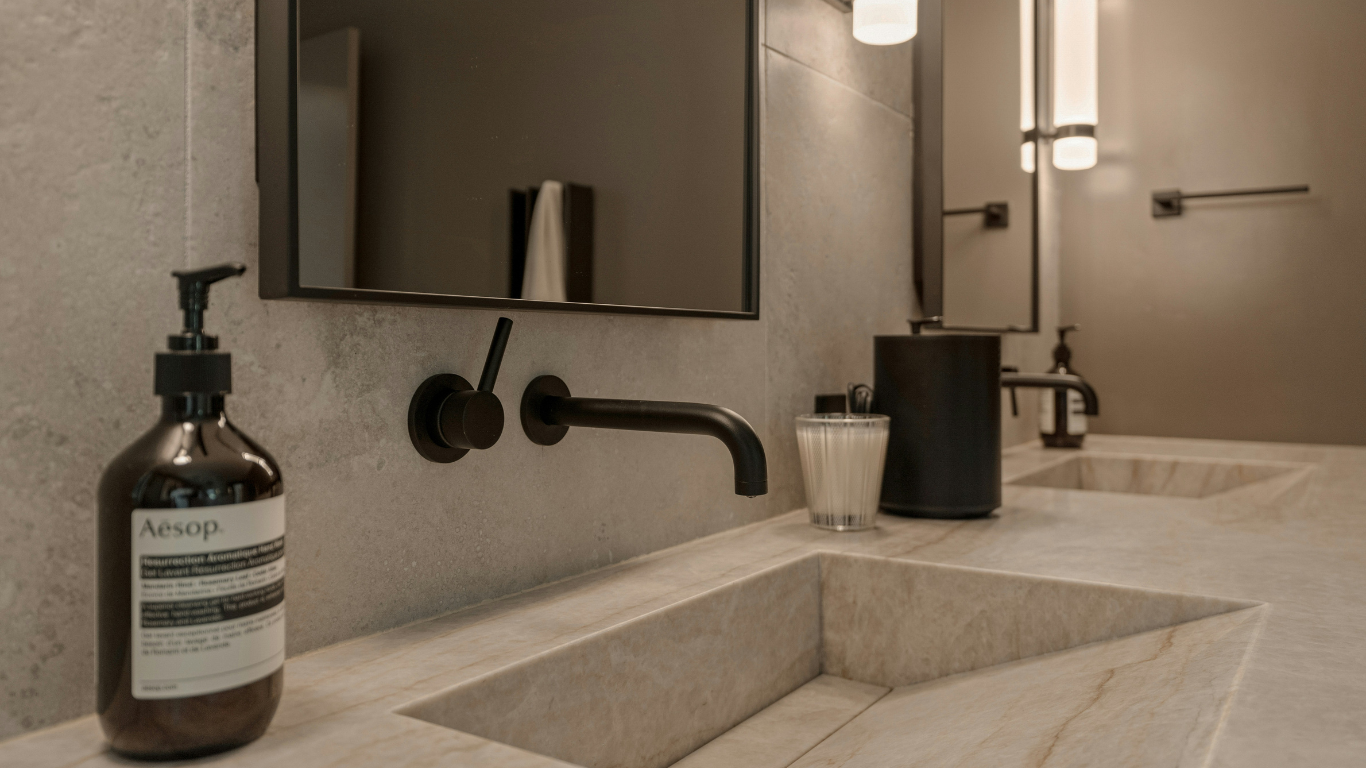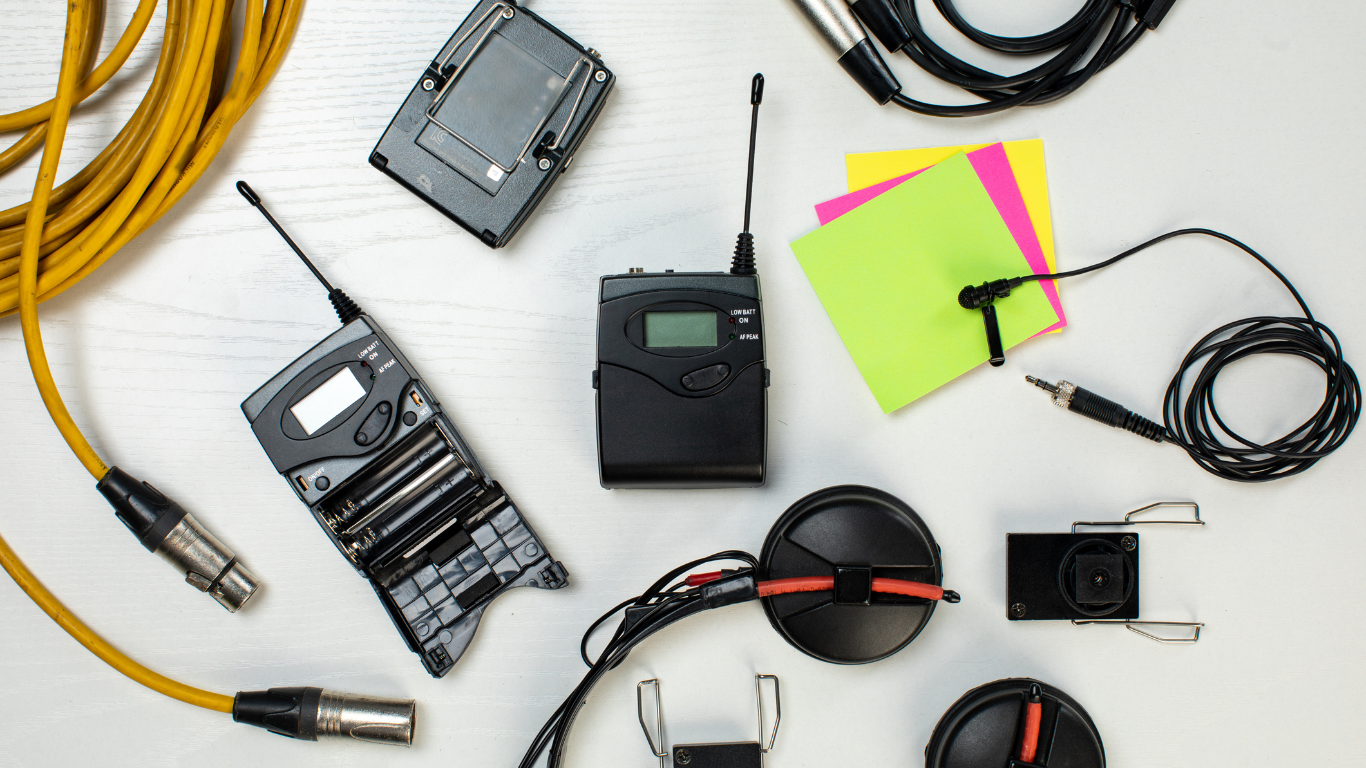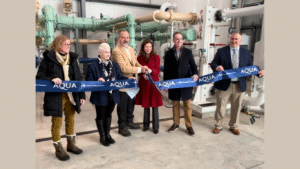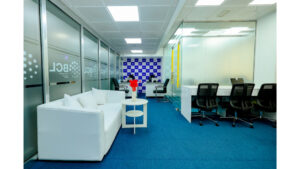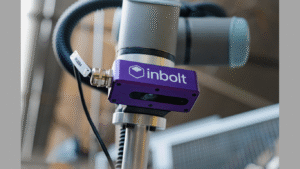Creating the perfect ambiance in a bathroom requires careful deliberation of lighting. One critical element that significantly affects the atmosphere is color temperature.
Measured in Kelvin, color temperature influences how light interacts with different colors and materials in your bathroom.
By understanding color temperature, homeowners can make informed decisions when selecting bathroom lighting fixtures, guaranteeing they create spaces that are both functional and visually pleasing.
Image source:https://unsplash.com/photos/modern-bathroom-with-double-sinks-and-soap-dispenser-yzuwRu_X6Dg
Understanding Color Temperature
Color temperature refers to the hue of the light produced by a fixture, quantified in Kelvin (K). A lower temperature (below 3000 K) emits a warm yellowish glow, and a higher temperature (above 5000 K) results in a cool bluish light.
Warm tones are ideal for creating a cozy and inviting atmosphere, and cooler tones are more energizing, perfect for spaces where you want clarity and focus.
When selecting fixtures for your bathroom, think about how the color temperature will affect the appearance of your vanity, tiles, and wall colors. Bathrooms with warm paint colors may benefit from warmer lighting to develop a soft, soothing effect.
If your space has cooler tones or you have silver fixtures, a cooler temperature might complement the existing design better. Understanding how the bathroom’s design elements interact with different lighting conditions is the first step in making beneficial choices.
Choosing the Right Color Temperature for Different Areas
Different areas within the bathroom may call for varying color temperatures. Warm white light (around 2700-3000 K) is perfect for creating a relaxing environment near the tub or in a spa-like shower area.
It highlights calming colors and finishes and promotes relaxation after a long day. Cooler white light (between 3500 K and 4100 K) is advantageous near the vanity area, where precision matters.
Here, great visibility is key for tasks like shaving or applying makeup. You can enhance your vanity area lighting by adding layered fixtures with a blend of color temperatures. A bright, cooler light overhead may pair beautifully with warm accent lights near mirrors, allowing you to adjust the settings based on your activities.
Use dimmable fixtures to transition easily between task lighting and ambient lighting. Accent lighting around architectural features can add depth and sophistication.
LED strips under cabinets or shelves can provide subtle illumination without overpowering the space.
It’s helpful to test different bulbs before installation to guarantee the color complements your bathroom finishes. Consistent lighting design across the bathroom can create a cohesive and inviting atmosphere.
The Impact of Smart Lighting
Advancements in smart lighting technology allow users to customize their lighting experience easily. Smart bulbs can adjust brightness and color temperature.
This adaptability is particularly beneficial in a bathroom setting, where lighting needs vary throughout the day. Morning routines might require bright, cool light to promote alertness, and evening baths could call for softer, warmer tones for relaxation.
Many smart lighting systems can even mimic natural daylight, promoting circadian rhythms for added health benefits.
With smart lighting, you can seamlessly transition through various shades of white light, enhancing both functionality and comfort. This level of control is a game-changer for homeowners looking to maximize usability in their bathrooms.
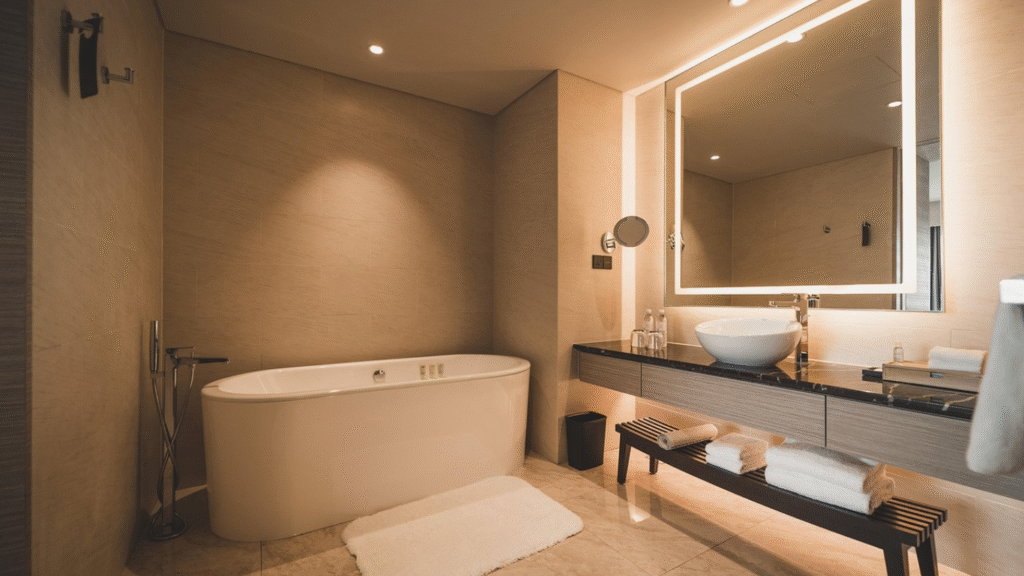
Incorporating Layers for Optimal Lighting
Traditional lighting often relies on a single overhead fixture, leaving certain areas inadequately lit. Instead, incorporate layers of light to create an evenly illuminated space.
Ambient lighting defines the illumination level, and task lighting focuses on work areas. Accent lighting can improve architectural features and decorative elements, adding interest and depth.
When combined, these layers create a cohesive lighting design that meets various functional and aesthetic needs.
Image source:https://pixabay.com/photos/bathroom-ceramic-tub-washroom-6878035/
Trends in Bathroom Lighting Design
Current trends in bathroom lighting showcase a blend of functionality and style. Vintage fixtures, such as Edison bulbs, complement rustic and industrial designs and provide warm light.
Sleek, modern fixture designs often incorporate LED technology for more efficient and adjustable light temperatures. Many homeowners opt for backlit mirrors, merging ambient lighting with a contemporary edge.
Fixtures that combine multiple layers, like pendant lights above sinks combined with recessed lighting, are increasingly popular. These design trends underscore the importance of selecting lighting that harmonizes with both practical requirements and personal taste.
When choosing bathroom lighting fixtures, understanding the role of color temperature is paramount. This knowledge allows homeowners to tailor their lighting choices to specific needs and design preferences.
By selecting the right color temperatures, incorporating smart technology, and layering different lighting types, you can create a bathroom that is both functional and inviting. Proper lighting improves visibility and transforms the atmosphere, turning everyday routines into enjoyable experiences.
Article received via email


